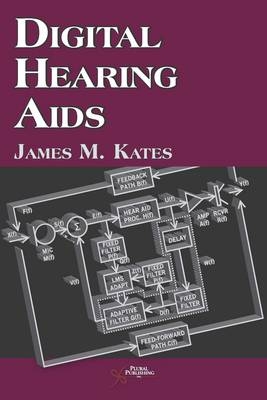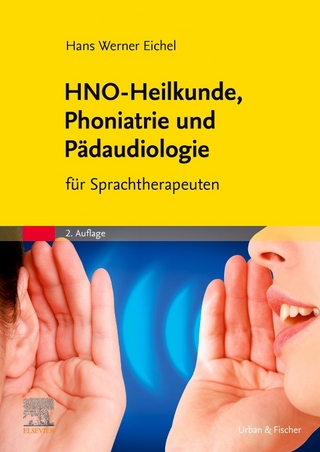
Digital Hearing Aids
Plural Publishing Inc (Verlag)
978-1-59756-317-8 (ISBN)
James Kates, E.E. James M. Kates, E.E. holds the position of Research Fellow with hearing-aid manufacturer GN ReSound. He is also an Adjunct Professor in the Department of Speech Language and Hearing Sciences at University of Colorado in Boulder. Prior to moving to Colorado, he was Research Scientist in the laboratory of Harry Levitt at the City University of New York. He received the BSEE and MSEE degrees from the Massachusetts Institute of Technology in 1971, and the professional degree of Electrical Engineer from M.I.T. in 1972. He has developed many of the signal-processing algorithms implemented in the GN family of hearing aids, including the DFS feedback cancellation algorithm and the Warp-17 frequency-warped dynamic-range compression algorithm. He is a Fellow of the Acoustical Society of America and a Fellow of the Audio Engineering Society, and is the author or co-author of 47 technical papers and holds 17 US patents with seven patents pending. A widower, he resides in Niwot, Colorado.
Preface Hearing-Aid Technology Types of Hearing Aids From Analog to Digital Digital Circuit Components Batteries Concluding Remarks References Signal Processing Basics Signal and System Properties Discrete Fourier Transform Filters and Filter Banks Block Processing Digital System Concerns Concluding Remarks References The Electroacoustic System Hearing Aid System Head and Ear Microphone and Receiver Vent Acoustics Occlusion Effect Concluding Remarks References Directional Microphones Hearing-Aid Microphones Directional Response Patterns Frequency Response Magnitude Frequency Response Microphone Mismatch Interaction with Vents Microphone Noise Microphones on the Head Microphone Performance Indices Rooms and Reverberation Benefit in the Real World Concluding Remarks References Adaptive and Multi-Microphone Arrays Two-Microphone Adaptive Array Delay-And-Sum Beamforming Adaptive Arrays Superdirective Arrays Widely-Spaced Arrays Array Benefits Concluding Remarks References Wind Noise Turbulence Hearing-Aid Measurements Signal Characteristics Wind-Noise Reduction Concluding Remarks References Feedback Cancellation The Feedback System Gain-Reduction Solutions Adaptive Feedback Cancellation Processing Limitations Concluding Remarks References Dynamic-Range Compression Does Compression Help? Algorithm Design Concerns Single-Channel Compression Multi-Channel Compression Frequency-Domain Compression Frequency Warping Concluding Remarks References Single-Microphone Noise Suppression Properties of Speech and Noise Signals Low-Level Expansion Envelope Valley Tracking Bandwidth Reduction Envelope Modulation Filters Concluding Remarks References Spectral Subtraction Noise Estimation Wiener Filter Spectral Subtraction Algorithm Effectiveness Concluding Remarks References Spectral Contrast Enhancement Auditory Filters in the Damaged Cochlea Spectral Valley Suppression Spectral Contrast Modification Excess Upward Spread of Masking F2/F1 Ratio Processing Comparison Combining Spectral Contrast Enhancement with Compression Concluding Remarks References Sound Classification The Rationale for Classification Signal Features Feature Selection Classifier Algorithms Classification Examples Concluding Remarks References Binaural Signal Processing The "Cocktail Party" Problem Signal Transmission Binaural Compression Binaural Noise Suppression Dichotic Band Splitting Concluding Remarks References Index
| Zusatzinfo | b/w illustrations |
|---|---|
| Verlagsort | San Diego |
| Sprache | englisch |
| Maße | 152 x 229 mm |
| Gewicht | 635 g |
| Themenwelt | Medizin / Pharmazie ► Gesundheitsfachberufe ► Logopädie |
| Medizin / Pharmazie ► Medizinische Fachgebiete ► HNO-Heilkunde | |
| ISBN-10 | 1-59756-317-X / 159756317X |
| ISBN-13 | 978-1-59756-317-8 / 9781597563178 |
| Zustand | Neuware |
| Haben Sie eine Frage zum Produkt? |
aus dem Bereich


